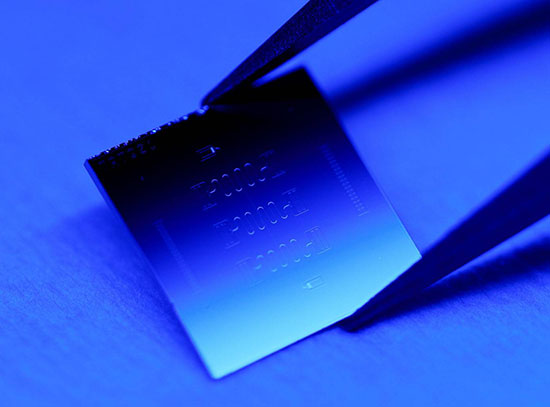Rare Particle Pairs Point to Primordial Soup's Temperature at Different Stages
STAR data capture key quark-gluon plasma measurements for insight into nuclear phase transition
November 13, 2025
 enlarge
enlarge
The STAR detector, which is as large as a house, specializes in tracking the thousands of particles produced by each ion collision at the Relativistic Heavy Ion Collider. (Kevin Coughlin/Brookhaven National Laboratory)
UPTON, N.Y. — At the Relativistic Heavy Ion Collider (RHIC), a U.S. Department of Energy (DOE) Office of Science user facility for nuclear physics research at DOE’s Brookhaven National Laboratory, scientists recreate the ultra-hot conditions of the early universe by smashing particles together at nearly the speed of light. RHIC's collisions delve into mysteries about the properties of matter by melting the colliding particles into a quark-gluon plasma (QGP) — a soup of fundamental particles that are the building blocks of protons and neutrons.
A new analysis of data captured by the STAR detector at RHIC revealed the QGP’s temperature at different stages of its evolution following collisions of gold ions — the nuclei of gold atoms stripped of their electrons. These measurements are key to mapping out how nuclear matter changes as quarks and gluons in the hot soup cool and coalesce to form more ordinary nuclear particles. Studying this phase transition at RHIC is helping physicists understand what happened in the briefest moments at the beginning of the universe, the last time the QGP existed in nature.
“The QGP is the hottest matter that we can create on Earth,” said Zaochen Ye, a STAR Collaboration member and professor at South China Normal University and former postdoc at Rice University who led the analysis. “The temperature of the QGP is the single most important thermodynamic parameter we need to characterize the properties of this extreme matter. For the first time at RHIC, we can directly measure it using electrons and their antiparticles.”
The new STAR results taken at different collision energies provide special access to the QGP’s properties at both its early stage, as the collision fireball rapidly expands, and a later stage, just before the hot, dense primordial soup cools and begins to form subatomic particles such as protons and neutrons.
The team found that the QGP temperature reached approximately 3.3 trillion degrees Celsius at the earliest stage in these collisions. That’s about 220,000 times hotter than the core of the sun, researchers noted. The later stage temperature, reached as the QGP cooled down and began transitioning into ordinary nuclear matter, was half as hot.
“We were able to almost pinpoint where the phase transition occurs using this method,” said Zhangbu Xu, a STAR physicist and professor at Kent State University. “What we found is that all the measured late-stage temperatures at different energies are the same and coincide with the expected temperature at the transition point. That was a surprise that we were very happy to see.”
Ralf Rapp, a theorist at Texas A&M University, said, “These are fantastic measurements, and it takes decades of planning and a learning curve to get to the point where you can finally extract meaningful data.”
A paper describing the findings recently published in Nature Communications.
A rare but ideal “thermometer”
To probe the temperature of the QGP system, STAR researchers zeroed in on the emissions of pairs of electrons and their antiparticles, called positrons. This combination of particles, a type of “dilepton,” is seldom produced in collisions — only one in roughly 10,000 events, researchers said.
 enlarge
enlarge
Mapping nuclear phase changes is like studying how water changes under different conditions of temperature and pressure (net baryon density for nuclear matter). Particle smash-ups at the Relativistic Heavy Ion Collider "melt" protons and neutrons to create quark-gluon plasma (QGP). (Brookhaven National Laboratory)
“It’s challenging to, first, find them,” Rapp said. “Then there’s a large number of background sources you have to subtract.”
Because they’re so rare, scientists need to capture and analyze many events in the dilepton approach.
“Statistics is the point here,” said STAR co-spokesperson Frank Geurts of Rice University. “We need statistics. Having the experience that we’ve built up over the many years that we’ve wanted to take these measurements, we know how to handle the data, we have the statistics, and here we are indeed extracting a temperature using this method.”
While tricky to capture, the unique particle pairs tracked by the STAR detector offer an ideal “thermometer” to nail down the temperature of the QGP, researchers noted.
Earlier studies at RHIC and the Large Hadron Collider (LHC) at CERN, the European Organization for Nuclear Research, used measurements of the energy of photons, fundamental particles of light, emitted from nuclear smashups to determine the QGP temperature. In 2010, the PHENIX Collaboration reported creating matter at about 4 trillion degrees Celsius using photons as a probe at RHIC’s full collision energy, 200 billion electron volts (GeV).
However, because the fireball created in these energetic collisions expands so fast, and cools down in the process, it alters the energy spectrum of the emitted photons, researchers said. This energy shift is similar to the way the sound of a train whistle changes as it speeds toward and then past you, a phenomenon known as the Doppler effect. Photon measurements require an additional model to disentangle this effect and to infer the true temperature at the early stage of the QGP, the STAR team noted.
Dileptons have a property called “invariant mass” that makes the particle pairs immune to this kind of “blue” energy shift. The pair’s invariant mass faithfully reflects the thermal temperature unchanged by the expanding source that emits those particles.
“The dileptons offer an extra dimension,” said Chi Yang, a STAR physicist and professor at Shandong University. “I'm very excited that we can extract the temperature of the QGP and use different ranges of invariant mass to access the temperature at different stages.” Yang specializes in direct photon and dilepton measurements.
The new measurements using dileptons were captured at two different collision energies of 27 and 54.5 GeV. They lay the foundation for repeating the dilepton analysis with data collected by STAR at 200 GeV.
Scientists compared their measurements to additional baseline temperature probes taken at other nuclear physics research facilities in Europe using a different set of dileptons at lower collision energies.
“Data obtained from those facilities provide a crucial benchmark, while our measurements at higher energies cover an important phase space unique to RHIC,” Ye said. “With the large dataset that we’re collecting right now in RHIC’s final run, plus future data from LHC, we will be able to probe the matter under the conditions closest to the first few microseconds of the Big Bang.”
This work was supported by the DOE Office of Science, the U.S. National Science Foundation (NSF), and a range of international agencies and organizations listed in the scientific paper. In addition to using the Open Science Grid, supported directly by NSF, the researchers made use of computing resources in the Scientific Data and Computing Facilities at Brookhaven Lab and the National Energy Research Scientific Computing Center (NERSC), which is another DOE Office of Science user facility at DOE’s Lawrence Berkeley National Laboratory.
Brookhaven National Laboratory is supported by the Office of Science of the U.S. Department of Energy. The Office of Science is the single largest supporter of basic research in the physical sciences in the United States and is working to address some of the most pressing challenges of our time. For more information, visit science.energy.gov.
Follow @BrookhavenLab on social media. Find us on Instagram, LinkedIn, X, and Facebook.
2025-22624 | INT/EXT | Newsroom









